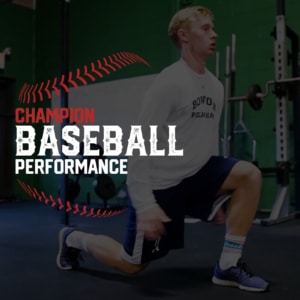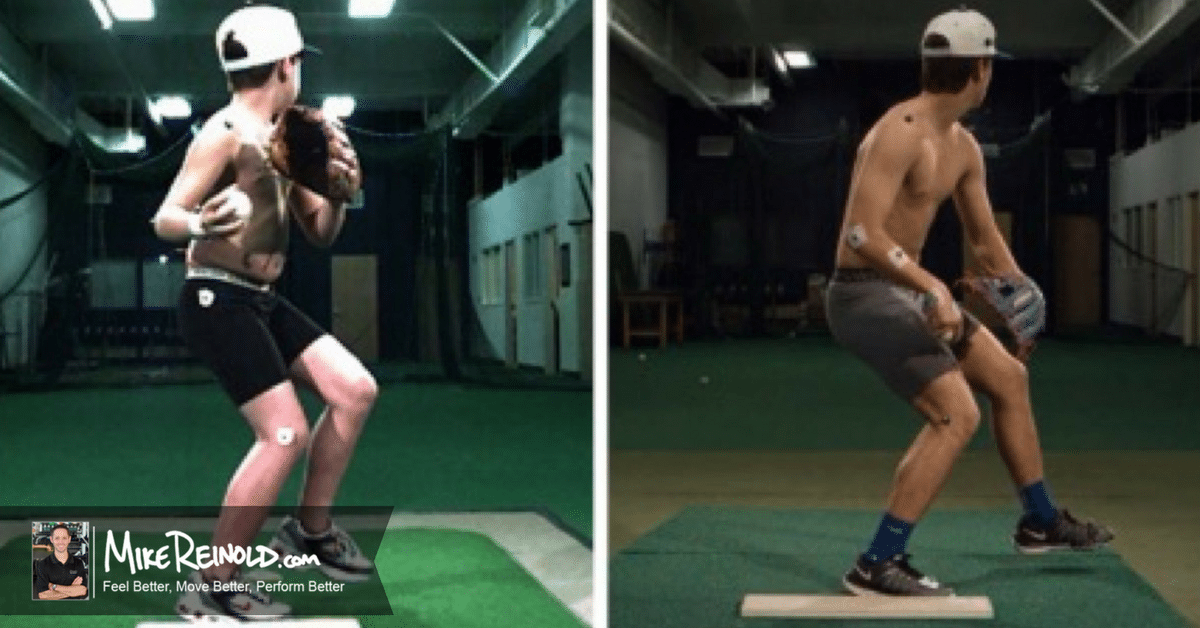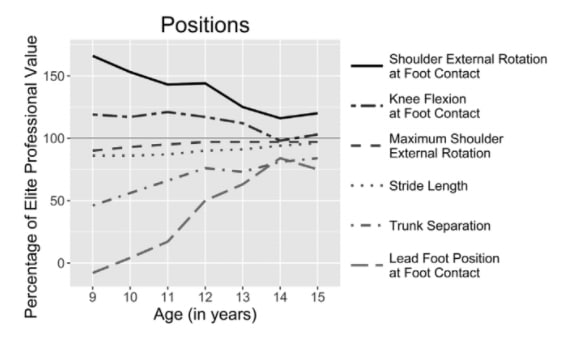There is no magical answer to the question, “what are the best pitching mechanics?” Take a look around Major League Baseball and you’ll see an endless amount of mechanical variations.
There’s definitely not just one way to throw a baseball.
However, some key moments in the delivery do tend to be more consistent in elite baseball pitchers than many think.
I’ve always considered the wind up more of the dramatical part of the delivery, often times allowing some unique “flare” for each pitcher. It’s almost like a peacock showing their feathers. The windup sets the stage for what is to come but doesn’t really have much force or stress seen.
However, everything changes when the foot hits the ground.
Take a look at the moment of foot contact between these three pitchers (photo credit is from Rob Friedman and his amazing collection of pitching gifs):
And these three at the moment of ball release:
All of a sudden, we start to see very similar mechanics, even though how they got to these positions differed dramatically.
Sure, you are always going to find anomalies, that’s why they are Major League Baseball pitchers. But I don’t think it’s in anyone’s best interest to try to emulate the mechanics of that one goofy big leaguer.
To truly understand how to best train youth baseball pitchers, we must understand 3 things:
- What do elite level baseball pitching mechanics look like?
- What are the mechanical faults most common in youth baseball pitchers?
- How does youth pitching mechanics change as they age?
Once we understand these factors, we can then develop programs to help facilitate their natural development. It is extremely important to base our pitching instruction on the science of baseball pitching mechanics.
We sat down last year with my team at Champion PT and Performance and The Farm Baseball Academy to discuss these exact 3 questions to help develop our Elite Pitching Performance Program.
Our youth and high school baseball pitchers should strive to develop sound pitching mechanics at an early age. Then, once the master the basics, we can start focusing on their long term development based on the above 3 points.
Youth Baseball Pitching Mechanics
A recent research study performed by Dr. Glenn Fleisig and the team at ASMI did an amazing job of following several youth baseball pitchers to see how their pitching mechanics changed as they aged, and how this compared to elite baseball pitchers. The authors followed a group of youth pitchers and assessed their mechanics yearly from age 9 to age 15.
For first time, we now have a more clear pitcher of how youth baseball pitchers slowly develop into elite pitchers.
Using this information, we can build not only better training programs for baseball pitchers to perform, but also a several year curriculum to develop elite pitching performance as they age and mature.
The researchers discussed a few main findings:
- Stride length – Youth baseball pitchers had a shorter stride length than elite pitchers
- Open landing – Youth baseball pitchers landed in a more open position than elite pitchers
- Land with too much Shoulder ER – Youth baseball pitchers shoulder was too far into layback early in their delivery when foot plant occurred than elite pitchers
- Trunk separation – Youth baseball has less separation of their hip and shoulder than elite pitchers
Interestingly, pitching velocity has been correlated to both trunk separation and stride length in youth pitchers, so these findings are even more important. These appear to be two very important things that youth pitchers do with their mechanics that may be holding them back from being elite.
The 3 Keys to Enhancing Pitching Performance
Based on the two reports above, we identified three big keys to enhancing pitching performance that we wanted to assure we built our programs around:
- Develop hip and shoulder separation
- Develop linear and rotation power
- Develop lower body drive and intent
We considered this the foundation of our pitching performance programs. Anything else, like working on long toss or weighted ball programs prior to developing this foundation would be focusing on the wrong things in my mind.
I always say that in baseball pitchers, the lower body develops the power, the core transfers the power, and the upper body dissipates the power.
Develop Hip and Shoulder Separation
The first key is developing the ability to separate the hip and shoulder. This will help land in a more closed position and develop the ability to transfer the force from the legs to the arm and eventually the ball.
While mobility of the hips and spine is a huge factor in developing separation, core stability is also important to control the mobility. In youth, I see many that don’t have any issue with the mobility to achieve separation, they simply don’t have the core control.
Develop Linear and Rotational Power
The next key is to train baseball pitchers to develop linear and rotational power towards the plate. The body is inherently strong moving forward and back, and less so moving sideways and rotation.
Linear and rotation power is something that needs to be developed.
Develop Lower Body Drive and Intent
Once proper trunk separation is established, and linear and rotational power of the lower half and core is developed, then we can focus on developing lower body drive and intent down the mound.
This would inherently increase stride length and help land in a more closed position.
It’s amazing to me how many kids essentially throw with their arms, and not their lower half. Take a look at our three pitchers here slowly developing drive with their lower half:
I do believe that intent is something that needs to be taught to many youth baseball pitchers, but many simply just don’t have the mobility, strength, and stability to drive down the mound.
How You Can Develop Elite Pitching Performance

But I know not everyone can train with us. That’s why we wanted to build a program anyone can follow online.
We are really excited to now offer online versions or our training programs! I teamed up with Champion Strength Coach Nick Esposito to take our acclaimed programing and build an online version anyone can follow so we can help more people all over the world.
We have our advanced program for high school, college, and pro athletes looking to maximize their performance, as well as a youth version for those younger athletes looking to start building an amazing base. The programs build complete athleticism, including baseball-specific strength, power, mobility, agility, and even an integrated arm care program.









